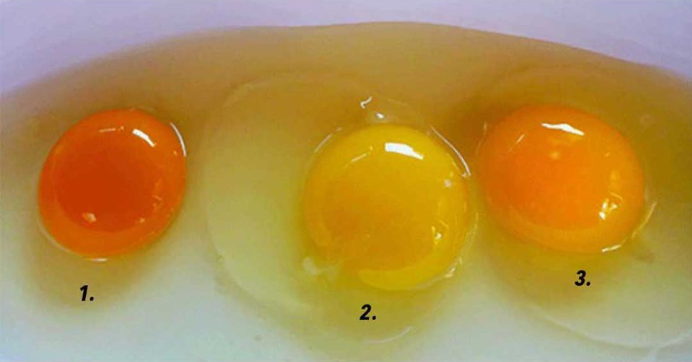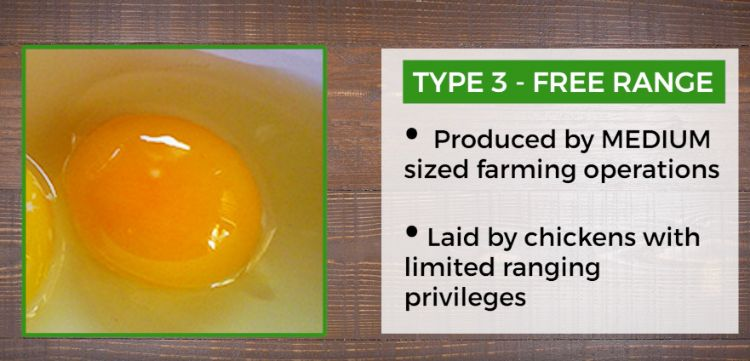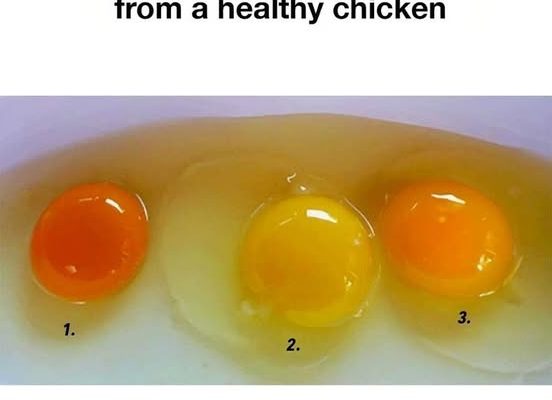When you crack open an egg, do you ever wonder about its origins? Most people are focused on avoiding surprises (like a double yolk!), but how often do you pay attention to the yolk’s color? A closer look might tell you more than you think. The yolk’s color can hint at the hen’s diet, its environment, and, by extension, the egg’s nutritional value. But what exactly does yolk color reveal, and how can you determine which eggs are the healthiest? Let’s crack open the details.
The Yolk Color Story: What It Tells Us

The color of an egg yolk isn’t just random; it’s a direct result of the hen’s diet. Bright, vibrant yolks typically come from healthier chickens with varied diets, while pale yolks may indicate limited or nutrient-deficient feeding conditions. Understanding these differences can help you make informed choices about which eggs to buy.
Pastured Eggs – Type #1: The Nutrient Powerhouse
Pastured eggs are at the top of the egg hierarchy, and here’s why: Pastured hens enjoy open spaces and are allowed to roam freely, foraging on grasses, insects, and sometimes even seeds. This rich, diverse diet produces eggs with darker yolks that are loaded with nutrients.
- Rich in Nutrients: These eggs boast higher levels of vitamins A, D, and E, which are crucial for immune health, bone density, and antioxidant protection. You’ll also get a healthy dose of omega-3 fatty acids, which are great for heart health.
- Color and Quality: The yolks of pastured eggs tend to have a deep orange hue, indicating a high concentration of carotenoids and xanthophylls. These antioxidants help reduce inflammation and protect the eyes.
- Taste: Many people claim that pastured eggs have a richer, creamier taste compared to other types. This flavor profile comes from the hen’s more varied and natural diet.
Caged Eggs – Type #2: The Least Nutritious Option
At the opposite end of the spectrum, caged eggs are the most common type found in supermarkets. These eggs often come from hens living in cramped conditions, fed a diet largely consisting of grain.
- Limited Nutrition: Caged hens are typically fed a basic diet of wheat and corn, which lacks the variety needed for high nutrient levels. As a result, the eggs tend to have paler yolks and contain fewer essential nutrients.
- Compromised Health for Hens: The living conditions of these hens are often far from ideal, impacting not only the hens’ health but the quality of the eggs they produce. The lack of movement and natural foraging opportunities can lead to higher stress levels and poorer health.
- Color and Quality: A pale yellow yolk is a clear indicator that the hen’s diet is lacking in diversity. It’s also a sign of fewer nutrients, like omega-3s and vitamins A and E, which are crucial for overall health.
Free-Range Eggs – Type #3: The Middle Ground
Free-range eggs come from hens that have a bit more freedom than caged ones but still aren’t as liberated as pastured hens. These birds may have access to outdoor areas, but they primarily consume grain-based diets.

- Moderate Nutrition: Free-range hens often eat a mix of grains and may occasionally peck at insects. This leads to yolks that are darker than caged eggs but lighter than pastured eggs. While they have a higher nutrient count than caged eggs, they still fall short of the nutrient profile found in pastured eggs.
- Healthier Option: Free-range eggs typically contain more vitamin A and omega-3 fatty acids than caged eggs, making them a better choice if pastured eggs are unavailable. They’re also lower in saturated fat, which is beneficial for heart health.
- Taste and Quality: Free-range eggs offer a balanced taste that sits between the richness of pastured eggs and the mild flavor of caged eggs. They’re a great option if you want a healthier egg without the premium price of pastured eggs.
Pastured vs. Free-Range vs. Caged Eggs: A Nutritional Comparison
When it comes to choosing between these egg types, understanding the differences in nutrition is essential. Here’s a quick breakdown:
- Vitamins and Minerals: Pastured eggs have the highest levels of vitamins A, E, and D, plus omega-3 fatty acids. Free-range eggs contain moderate levels of these nutrients, while caged eggs have the least.
- Fat Content: Pastured and free-range eggs are lower in saturated fats compared to caged eggs, making them the better option for heart health.
- Carotenoids: Carotenoids like lutein and zeaxanthin, which contribute to the dark yolk color, are most abundant in pastured eggs. These antioxidants support eye health and reduce the risk of macular degeneration.
What the Research Says About Yolk Color and Health

Scientific studies support the idea that yolk color is more than just a visual cue. Darker yolks are associated with higher levels of xanthophylls, a type of carotenoid known for its anti-inflammatory properties. In fact, hens that have access to a diverse diet produce eggs that are significantly richer in essential nutrients, including omega-3 fatty acids and vitamins, which are vital for our overall well-being.
- Vitamin A: Essential for maintaining healthy vision and a robust immune system.
- Omega-3 Fatty Acids: Known for reducing inflammation and supporting heart health.
- Vitamin E: Acts as an antioxidant, protecting cells from damage.
Final Thoughts: Making the Healthiest Choice
When it comes to choosing eggs, considering the yolk color can offer insight into the hen’s diet and the nutritional value you’re getting. Pastured eggs are the most nutritious, offering rich, orange yolks packed with essential vitamins and healthy fats. Free-range eggs are a good middle ground, providing better nutrition than caged eggs, while caged eggs tend to have the least nutritional value.
If your goal is to prioritize your health (and support ethical farming practices), opting for pastured or free-range eggs is a worthwhile investment. You’ll not only be doing your body a favor, but you’ll also be supporting more humane practices in the poultry industry.


